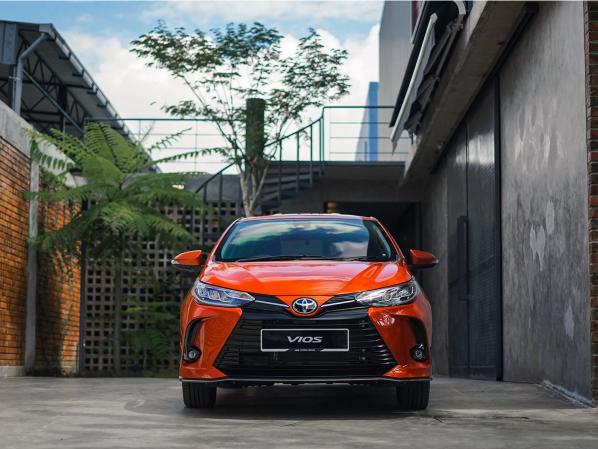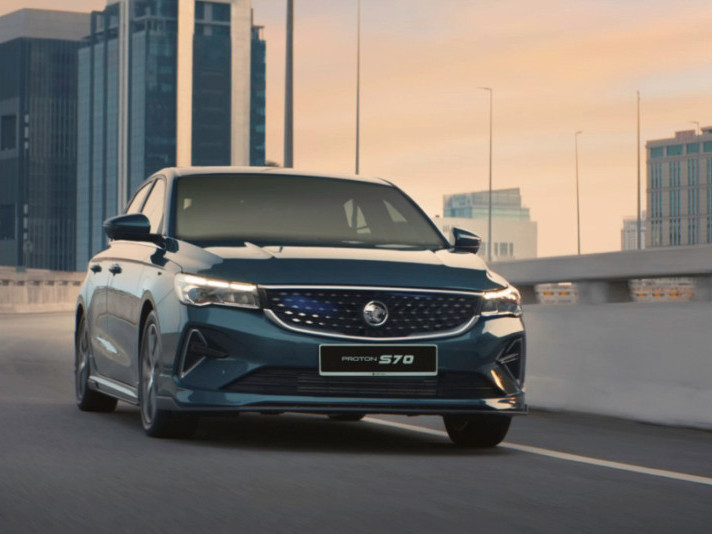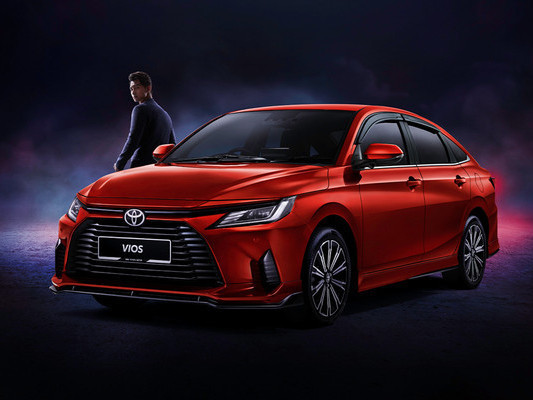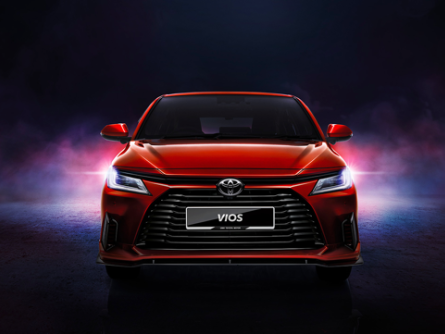Q
how to change tires toyota vios
Changing a tire on a Toyota Vios is a pretty straightforward job. First off, make sure you've got the car parked on a flat, safe spot. Pull the handbrake up tight and pop it into Park (if it's an auto) or first gear (for manuals). Then, grab your wheel chocks and wedge 'em diagonally opposite the tire you're swapping out to stop the car rolling. Next, fire up the jack – but hey, don't just stick it anywhere under the car! Find those designated jack points on the chassis; you don't wanna mess up the undercarriage. Once the wheel's off the ground, grab your wrench and crack those lug nuts counterclockwise – they might be on tight, so a little muscle might be needed. Yank the old tire off, line up the spare, and slide it on. Finger-tighten the lug nuts first, making sure to go in a diagonal pattern – that keeps everything even. Lower the jack so the spare's touching the ground, then really crank down on those nuts, again in that diagonal order, to make 'em good and snug.
A quick heads-up for regular maintenance: keep an eye on your tire pressure and tread wear. Here in Malaysia, with the constant heat and rain, tires age faster. Worn-down treads are a real hazard in the wet – you'll notice less grip and longer stopping distances. Don't forget about the spare, either – check its pressure every now and then so it's ready when you need it. Oh, and after swapping a tire, swing by a proper workshop for a wheel alignment and balancing as soon as you can. Trust me, it'll save you from a wobbly steering wheel at high speeds. And even if the tread looks okay, if your tires are over 5 years old, it's time to think about replacing 'em. Rubber hardens over time, and that means compromised grip – not worth the risk.
Special Disclaimer: This content is published by users and does not represent the views or position of PCauto.
Related Q&A
Q
What is the maintenance schedule for a 2021 Vios?
For the 2021 Toyota Vios, it's recommended to get regular maintenance every 6 months or 10,000 kilometers, whichever comes first. This typically includes an engine oil change, oil filter replacement, brake system check, tire pressure inspection, and chassis bolt tightening. At 20,000 kilometers, you'll need to additionally inspect or replace the air filter and cabin air filter. Then, around 40,000 kilometers, it's a good idea to swap out the brake fluid and spark plugs to keep the engine running at its best.
Malaysia's hot and humid climate can speed up fluid degradation, so owners might want to shorten the intervals for coolant and transmission fluid changes to roughly 60,000 kilometers. It's worth noting that if you often drive in heavy traffic or take frequent short trips—what we call "severe driving conditions"—this can increase wear and tear on components. In those cases, consider changing the engine oil every 5,000-7,000 kilometers instead.
Sticking with Toyota Genuine oil as recommended by the factory, like 5W-30 viscosity, will help the engine handle the local heat better and also keep your original warranty intact. Regular maintenance isn't just about keeping performance up; it also lets mechanics use computer diagnostics to spot potential issues early. For example, checking the battery life is super important here in Malaysia to prevent starting problems during the rainy season.
Q
What is the engine of the Toyota Vios 2021?
The 2021 Toyota Vios in the Malaysian market comes with a 1.5-liter 2NR-FBE four-cylinder naturally aspirated petrol engine, featuring Dual VVT-i technology. It cranks out 107 horsepower (79 kW) and 140 Nm of torque, paired with a CVT gearbox that simulates 7 speeds. This powertrain focuses on fuel efficiency and smooth driving, with an official combined fuel consumption of around 5.1 liters/100 km. What's worth noting is the aluminum cylinder block that cuts weight, and the optimized intake and exhaust system which boosts low-end torque – perfect for Malaysia's stop-and-go city traffic. In its class, the Vios isn't about high performance, but it's known for durability and low maintenance costs, staying true to Toyota's practical reputation. If you need more power, some rivals offer turbo options, but the naturally aspirated engine still holds the edge in long-term running costs and easy repairs – that's part of why the Vios remains a hit in Malaysia's family car scene.
Q
Is Toyota Vios made in China?
The Toyota Vios in the Malaysian market mainly comes from production in Thailand, not China. As Toyota's key production base in Southeast Asia, Thailand manufactures the Vios specifically designed for the ASEAN region, making it better suited to local climate and road conditions while maintaining Toyota's usual reliability. As a global strategic model for Toyota, the Vios has different production layouts in various regions. For example, models sold in the Chinese market may be produced by local joint ventures, but the Vios supply in Malaysia is primarily imported from Thailand. This explains why Vios vehicles in Malaysia often have "Made in Thailand" on their nameplates. For Malaysian consumers, choosing a Thai-produced Vios actually has certain advantages: the Thai factory has mature craftsmanship, the parts supply chain is similar to Malaysia's, leading to relatively lower maintenance costs later on. Additionally, vehicles produced in Thailand enjoy tariff benefits under ASEAN trade agreements, which indirectly enhances the Vios' value for money in the Malaysian market. If there are doubts about the vehicle's origin, it is recommended to further confirm through the first letter of the Vehicle Identification Number (VIN) or the vehicle nameplate; typically, Thai-made Vios have a VIN starting with "M".
Q
What are common Vios problems?
The Toyota Vios is a top-selling entry-level sedan in the Malaysian market, boasting solid overall reliability. However, there are a few common issues owners should keep an eye on. For instance, some early models might experience unstable engine idling or slight vibrations, usually linked to throttle body carbon buildup or aging spark plugs—regular cleaning and maintenance are recommended. Additionally, suspension bushings on certain model years can develop squeaks after prolonged use, especially given Malaysia's rough road conditions; replacing the rubber components promptly should fix this. The CVT transmission may occasionally have minor jerking in extreme traffic jams, but regular oil changes can effectively extend its lifespan. The electric power steering system might trigger a protection mode after long hours of operation in high temperatures, causing heavier steering feel—simply turning off the engine and restarting should restore normal function. Notably, the Vios has a rather unique air filter placement, making DIY replacements a bit tricky; it’s advisable to follow the manual for that. These are all normal wear-and-tear issues. As long as you stick to the manufacturer’s recommended 10,000 km service intervals, the Vios remains quite durable under Malaysia’s hot climate and varied road conditions. For Malaysian consumers on a budget who value hassle-free practicality, it’s still a worthy option to consider.
Q
How reliable is the 2021 Toyota Vios?
The 2021 Toyota Vios has delivered impressive reliability in the Malaysian market. True to Toyota's reputation for durability, it's powered by a proven 1.5L Dual VVT-i engine paired with a CVT transmission, offering smooth power delivery and excellent fuel efficiency—perfect for local city driving. Maintenance costs are relatively low, parts are readily available, and repairs are hassle-free. Toyota's extensive after-sales service network in Malaysia further enhances the ownership experience. Based on owner feedback, common concerns mainly center on details like sound insulation and interior materials, but mechanical failure rate is extremely low. As an economy sedan, its overall performance meets or even exceeds expectations. It's worth noting that the Vios achieved a 5-star rating in ASEAN NCAP crash tests, ensuring safety. For Malaysian consumers with limited budgets who value reliability, it's a practical choice, and its resale value leads the segment, giving it an edge in long-term ownership costs.
Q
Is the Toyota Vios a SUV?
The Toyota Vios isn't an SUV—it's a compact four-door sedan (B-segment sedan), designed mainly for city commuting and daily family use. It's super popular in Malaysia thanks to its fuel efficiency, reliability, and great value for money. The Vios sits lower to the ground, with a obviously different ride height compared to SUVs (which usually have more ground clearance for rough roads), and it doesn't come with SUV staples like four-wheel drive. Instead, it's all about nimble handling and comfort. If you're after a Toyota SUV in a similar price range, check out the Raize or Rush. Both have taller ride heights and boxier body styles, making them better for different types of terrain. When Malaysian buyers are picking a car, it's important to know the difference between categories. Sedans are good for highway driving and better on fuel, while SUVs offer more ground clearance and flexible space. It really comes down to your actual needs—like the roads you'll be driving on or how many family members you have. And hey, all Toyota models in Malaysia come with a solid after-sales service network, so that's a plus.
Q
Is the 2021 Venza expensive to maintain?
The 2021 Toyota Venza's maintenance costs in Malaysia are on the upper end of the medium range. Since it comes with a hybrid system, daily upkeep expenses might be slightly higher than traditional gasoline-powered vehicles, but over the long haul, you can save some money through its lower fuel consumption. Regular maintenance like oil changes and filter replacements costs are similar to other SUVs in its class, roughly between RM400 and RM600, depending on the service center's pricing. The hybrid battery is pretty durable and generally doesn't need frequent replacement, but if it does need changing after the warranty expires, the cost could be steep. It's advisable for owners to stick to the official maintenance schedule to extend the vehicle's lifespan and keep costs in check. Malaysia's climate has minimal impact on battery performance, but regular checks of the cooling system and electrical components are still important. Toyota has an extensive after-sales service network in Malaysia with ample supply of genuine parts, which helps reduce repair waiting times and potential costs. For consumers considering a used Venza, it's recommended to check the maintenance records to ensure the previous owner kept up with proper servicing. Hybrid vehicle maintenance requires specialized technicians, so choosing an authorized service center is a smart move.
Q
What is the difference between 2021 and 2023 Toyota Vios?
The main differences between the 2021 and 2023 Toyota Vios lie in upgrades to exterior design, tech features, and safety performance. The 2023 Vios gets a more modern front-end design, including a redesigned grille and LED headlight assembly, giving it a sportier overall look. Inside, the 2023 model ups the ante with a larger infotainment screen and supports more advanced smartphone connectivity, like wireless Apple CarPlay and Android Auto, making it more user-friendly. When it comes to safety, the 2023 Vios comes standard with Toyota Safety Sense active safety suite, packing features like pre-collision warning, lane departure alert, and automatic high beam adjustment, offering more comprehensive protection compared to the 2021 version. Both models share the same powertrain – the trusty 1.5-liter Dual VVT-i engine paired with a CVT transmission – but the 2023 Vios gets some minor tweaks to boost fuel efficiency. For Malaysian consumers, the 2023 Vios upgrades are all about added value, especially with competition heating up in the segment, these improvements help it stay competitive. It's worth noting that Vios models in Malaysia usually get some market-specific tweaks to meet local needs, like beefed-up air conditioning systems to handle the tropical climate – details that carry over to both model years.
Q
How much is Toyota Vios in Indonesia?
In the Indonesian market, the price of the Toyota Vios varies depending on the trim and configuration. The base manual transmission version starts at around 270 million Indonesian rupiah (approximately RM82,000), while the top-spec automatic model can go up to 350 million Indonesian rupiah (about RM106,000). Actual prices may be affected by local taxes, promotional policies, and other factors. The Indonesian-spec Vios has slight configuration differences compared to the Malaysian version. For instance, the Indonesian market places more emphasis on practical features like rear-seat air-conditioning vents, whereas the Malaysian variant might highlight a more tech-forward feel. For Malaysian consumers considering cross-border purchases, it’s important to note the differences in vehicle specifications between the two countries, including emission standards, warranty terms, and right-hand drive vs. left-hand drive compatibility—all of which could impact the user experience and long-term maintenance costs. Additionally, the Vios is generally known for its durability and fuel efficiency across Southeast Asian markets, making it suitable for city commuting, though tuning tweaks in different countries may result in subtle variations in driving feel.
Q
What generation is Vios in 2021?
The Toyota Vios sold in the Malaysian market in 2021 belongs to the third-generation model (codenamed XP150). This generation has undergone several minor facelifts since its launch in 2013. The 2021 model continues with this generation's architecture but comes with an upgraded 1.5L Dual VVT-i engine paired with a CVT transmission, delivering excellent fuel efficiency. The third-gen Vios is widely popular in Malaysia for its durability and low maintenance costs. It measures 4,425mm in length, 1,730mm in width, and 1,475mm in height, with a 2,550mm wheelbase, offering relatively spacious rear-seat room in its class. It's worth noting that some Southeast Asian countries welcomed the all-new fourth-generation Vios based on the DNGA platform in 2023, but the Malaysian market followed suit a bit later due to strategic adjustments. The current third-gen Vios is locally assembled (CKD) with a cooling system optimized for tropical climates. It comes standard with 7 airbags (on higher-spec variants) and Toyota Safety Sense active safety technology. Its used car value retention rate has long been at the forefront of B-segment sedans in Malaysia, making it still a practical choice for budget-conscious buyers.
Latest Q&A
Q
How many miles per gallon does a 2021 Mitsubishi get?
Mitsubishi's fuel efficiency in 2021 varies by model and powertrain. Take the Outlander, for example – the 2.4L four-cylinder front-wheel-drive version gets around 25 mpg combined (about 10.6 km/L). The plug-in hybrid (PHEV) model, on the other hand, delivers better efficiency in all-electric mode, though actual numbers depend on driving conditions and battery state. For Malaysian buyers, fuel economy is also affected by local road conditions, driving habits, and fuel quality. It’s best to check Mitsubishi Malaysia’s official localized data or real owner reviews for the most accurate info. With hybrids and EVs gaining traction globally, if you’re thinking about long-term running costs, keep an eye on Mitsubishi’s new energy tech – stuff like the PHEV system’s regenerative braking and all-electric range, which can really cut down on fuel use for city commutes. When picking a model, make sure to factor in your daily driving distance and how easy it is to access charging stations.
Q
What kind of engine is in the 2021 Triton GSR?
The 2021 Mitsubishi Triton GSR is powered by a 2.4-liter MIVEC turbocharged diesel engine, which features Mitsubishi's advanced common-rail direct injection technology and a variable geometry turbocharger. It cranks out 181 horsepower and a peak torque of 430 Nm, mated to a 6-speed automatic transmission, delivering strong performance and impressive fuel efficiency. It's perfectly suited for Malaysia's diverse road conditions, handling both city driving and off-road adventures with ease. This engine also meets Euro 5 emission standards, showcasing Mitsubishi's commitment to eco-friendly technology. For Malaysian consumers, the Triton GSR's engine isn't just powerful; it's also highly durable and relatively low-maintenance, making it a standout in Mitsubishi's pickup truck lineup. What's more, the turbo diesel engine provides high torque at low revs, making the vehicle particularly capable when hauling loads or towing, ideal for users who need frequent transportation or enjoy outdoor activities.
Q
What is the fuel consumption of the Mitsubishi Triton 2021?
The fuel consumption of the 2021 Mitsubishi Triton varies depending on the drive type and transmission configuration. According to official figures, models equipped with the 2.4-liter turbocharged diesel engine (with MIVEC technology) have an average fuel consumption of approximately 7.6 liters per 100 kilometers for the manual transmission version, and around 8.0 liters per 100 kilometers for the automatic transmission version. Four-wheel drive models have slightly higher fuel consumption due to additional mechanical losses, but overall, it remains one of the more fuel-efficient pickups in its class. This engine's ability to deliver high torque at low revs makes it well-suited for Malaysia's hilly terrain and cargo-carrying needs, while its ECO driving mode further optimizes fuel efficiency. It's worth noting that actual fuel consumption can be affected by driving habits, road conditions, and load. It's recommended that owners perform regular maintenance, such as cleaning the air filter and changing the oil promptly, to maintain optimal fuel efficiency. For Malaysian users who frequently drive long distances or need a vehicle that balances family and commercial use, the Triton's balanced fuel economy and reliability make it a solid choice. Other models in the same class with similar performance include the Toyota Hilux and Ford Ranger, though each has slightly different tuning priorities.
Q
How much can a 2021 Mitsubishi Triton tow?
The 2021 Mitsubishi Triton offers a maximum towing capacity of 3.1 tonnes (3100kg) in the Malaysian market. This figure applies to the automatic transmission models equipped with the 2.4-liter turbocharged diesel engine, which cranks out 181 horsepower and 430 Nm of torque—plenty of muscle to handle towing needs. It’s important to note that actual towing performance depends on factors like trailer type, load distribution, and road conditions. Owners should always consult the vehicle manual before hauling heavy loads and ensure the towing setup is properly installed.
Underpinning the Triton is a chassis built with high-strength steel and a reinforced suspension system, both working to boost towing stability. The standard trailer stability control system also helps minimize trailer sway during driving, adding an extra layer of safety. For those who tow regularly, keeping an eye on transmission oil temperature, brake system condition, and tire wear is crucial—these small checks go a long way in extending vehicle life and ensuring safe journeys. Malaysia’s hilly terrain and humid climate can affect towing performance, so it’s wise to reduce speed slightly and take more frequent breaks during long trips or when carrying heavy loads to prevent engine overheating.
Q
How big is the 2021 Triton?
The 2021 Mitsubishi Triton, a popular pickup truck in the Malaysian market, measures 5305mm in length, 1815mm in width, and 1780mm in height, with a wheelbase of 3000mm. This size ensures ample passenger space and excellent cargo capacity, with the truck bed sized at 1520mm long, 1470mm wide, and 475mm high – perfect for daily hauling and outdoor adventures. In Malaysia, it's favored for its durability and off-road performance, handling the country's varied road conditions and climate like a champ. The Triton comes with an advanced 4WD system and multiple driving modes, making light work of tricky terrains. Inside, the focus is on practicality and comfort, featuring a multifunction steering wheel and touchscreen infotainment system to up the driving experience. For Malaysian buyers, the Triton isn't just a workhorse; it's also a solid choice for family getaways. Its reliability and versatility keep it competitive in its class.
View MoreRelated News

Toyota Vios Interior Design Revealed: A Balance of Functionality and Aesthetics
LienJul 18, 2025

Proton S70 vs Honda City: The New Segment Leader?
LienJun 5, 2025

Toyota Vios : An In-Depth Buying Guide
LienMar 25, 2025

Toyota Vios: Selling price starts from RM 89,600, is it a Mini Camry?
LienMay 28, 2024

Why are people more willing to choose Toyota Hilux instead of Isuzu D-Max?
JamesNov 3, 2025
View More


















Pros
Cons